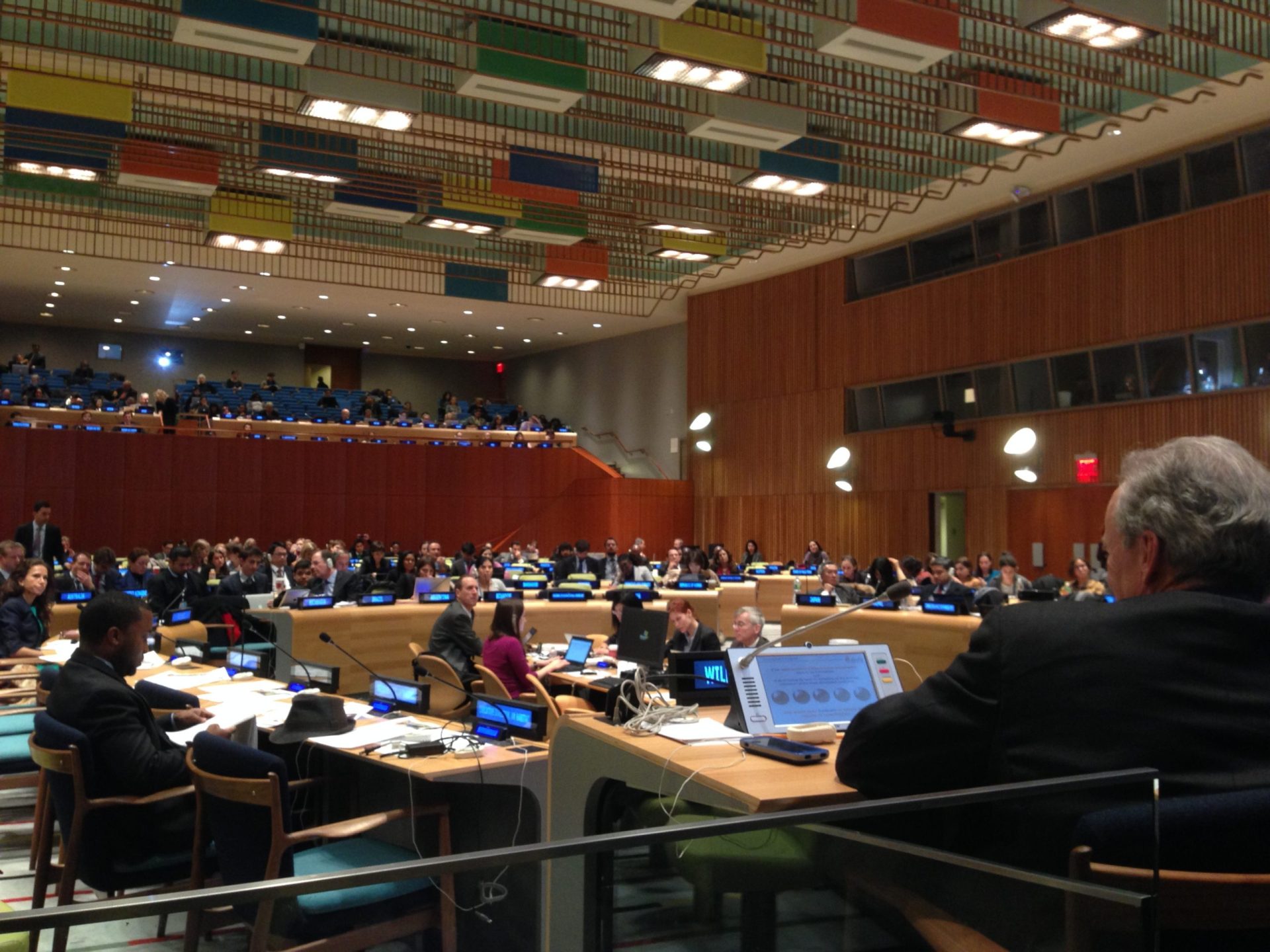What did we do in 2014? We are glad to report that it was a great year of progress in the fight against toxic pollution. Here’s why:
- Out In The Global Field – Asia, Africa, Central Asia/Eastern Europe, Latin America
- Mapping Pollution, Finding “Orphans”
- Putting Toxic Pollution On the World’s “To-Do” List
- Focus on Research, Giving Voice to the Underrepresented
- 2014 Report: Top Ten Countries Turning The Corner on Toxic Pollution
- Forging a Global Alliance
Out In The Global Field
We continued life-saving work on the ground, cleaning up toxic communities, where the poisoned poor live, and working on new methods to solve this global health crisis.
See a list of our projects-in-progress. 2014 highlights include:
— ASIA
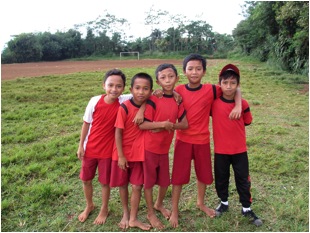
In Indonesia, we remediated a polluted soccer field in Cinangka, transforming it from a toxic lead dump into a safe play space, at a cost of under $10 a person. By demonstrating to the local government that cleanup can be quick and low-cost, we opened the way for more cleanup work at other contaminated sites across the country.
Read more about the soccer field located near the primary school, and the children and their “life-saving” shoes.
In Vietnam, we completed cleanup of the worst contaminated homes in Dong Mai, a community devoted to the recycling of used-lead-acid batteries. This included remediation work at the home of Mr. Bùi Văn Lỏng, who along with his grandson and neighbors suffer from lead poisoning.
We are currently constructing special changing rooms so that workers can properly clean up in order to reduce the amount of toxic lead dust they bring home to their families on their clothing and in their hair.
The successful remediation work at Dong Mai provides a model that can be replicated at thousands of other toxic craft villages across Vietnam.
— AFRICA
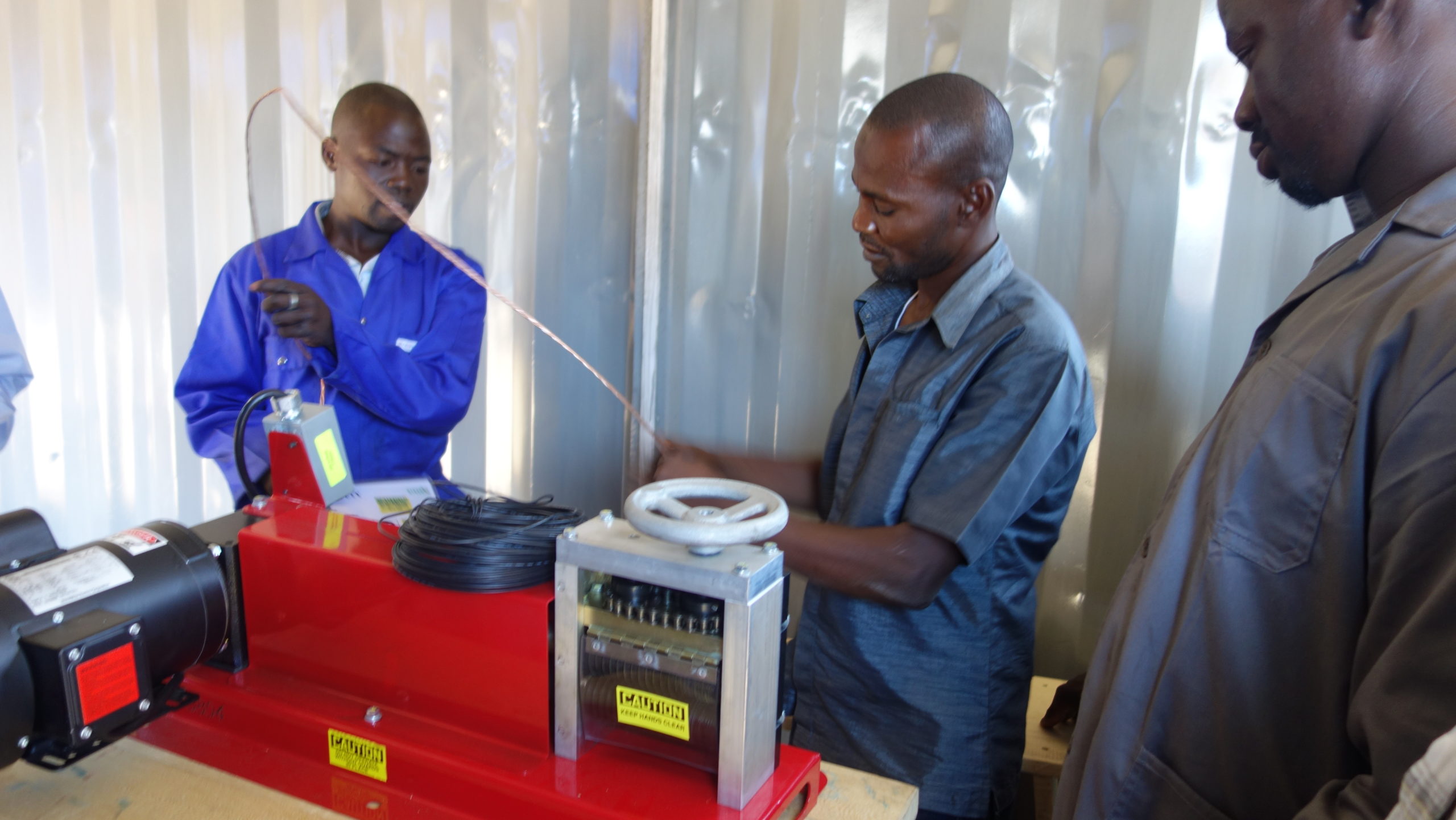
In Ghana, we celebrated the opening of a new recycling facility in Agbogbloshie, one of the largest e-waste dumps in West Africa.
The facility is equipped with four automated machines that can strip or pull apart scavenged plastic coated cables and wires to extract copper and other valuable materials within without toxic burning. Now recyclers have a safer option.
Additional machines are being brought in to increase the efficiency of the facility and to encourage more recyclers to turn away from burning, which has poisoned thousands (an estimated 250,000 people are at risk) and contaminated the community’s land, water and food.
— CENTRAL ASIA/EASTERN EUROPE
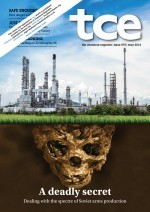
Just how hard is it to clean up a toxic polluted site sitting on top of a “bomb,” at a secret former Soviet arms site? One of our most dramatic successes last year happened in the restive Ukraine region, and was chronicled by Businessweek and TCE magazine.
IChemE, the Institute of Chemical Engineers, just announced that they will be awarding the 2014 Hanson Medal to our very own Andrew McCartor, who wrote the insightful piece detailing his work on the former arms site for TCE magazine.
Last year we also started work in Mongolia, where over 20% of the country’s rural populations have become “gold ninjas” (a term which seems to stem from the green panning bowls miners carry on their backs, making them resemble the Teenage Mutant Ninja Turtles.)
Over the next two years, Pure Earth will work with the Mongolian government, civil society groups and miner’s collectives in Mongolia to conduct environmental monitoring, health education, training in mercury-free mining methods, and other programs to provide mining communities with a safe, legal and sustainable source of income.
— LATIN AMERICA
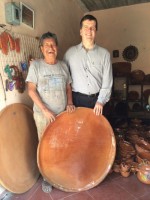
In Mexico, we launched the first phase of our Barro Aprobado project in Morelos at the first restaurant to go lead-free under the program.
Renowned poet, novelist and environmental activist Homero Aridjis lended his support in a video about Mexico’s 500 year-old tradition of beautiful but deadly pottery. The project also includes a website with a continuously updated directory of restaurants, stores and pottery workshops that have agreed to go lead-free under our program.
Our grassroots approach last year included taking artisans to numerous food festivals to introduce their lead-free wares to consumers, attending cooking workshops, distributing posters and flyers to the public, and developing a “lead-free” seal for potters to use to distinguish their non-toxic pottery from traditional wares made with leaded glazes.
The word is getting out. At one festival, lead-free potters sold out 95% of their wares. Artisans in Tlayacapan that are part of the program have tripled their sales.
As part of this project, Pure Earth researchers published a paper in the prestigious journal Annals of Global Health about blood lead levels in Mexico. The findings are startling – more than 15% of the population of Mexico will experience a decrement of more than 5 IQ points from lead exposure. Read the English and Spanish version of the paper here:
- Blood Lead Levels in Mexico and Pediatric Burden of Disease Implications
- Niveles de Plomo en Sangre en México y su Implicación para la Carga Pediátrica de la Enfermedad
Mapping Pollution, Finding “Orphans”
In 2014, our global team of on-the-ground investigators continued searching for, identifying, mapping, and assessing toxic sites in communities around the world under our Toxic Sites Identification Program (TSIP) adding over 480 sites worldwide to our database. In addition, we trained 31 new investigators and 34 government representatives at sessions conducted in five countries.
Last year we also shared data from the TSIP project at 15 events attended by representatives from various governments, multilateral agencies, the UN, civil society organizations and the private sector.
Raising awareness of these sites is crucial. Communities left with legacy pollution are often forgotten or “orphaned” as polluters try to avoid responsibility for cleanup. The TSIP allows us to pinpoint and prioritize cleanup of the most contaminated communities with the largest at-risk populations.
Putting Toxic Pollution On the World’s “To-Do” List
Working with the Global Alliance on Health and Pollution (GAHP), we went to the U.N. and succeeded in getting language about pollution inserted into the draft Sustainable Development Goals (SDGs) – that key list of global priorities that will set the agenda for what the world pays attention to beyond 2015.
When the SDGs is finalized this year, government agencies and private foundations will adjust their own goals to support the SDGS, which may mean more crucial funding for our fight against life-threatening toxic pollution.
Focus on Research, Giving Voice to the Underrepresented
Without data and information, one of the world’s biggest global problems will remain invisible.
In 2014 we continued our push to expand pollution research by publishing over seven articles, papers and commentaries in some of the most prestigious peer-reviewed journals, including Environmental Research, Annals of Global Health, Morbidity and Mortality Weekly Report, and the textbook of Children’s Environmental Health.
We also continued to encourage voices from researchers and scientists in low- and middle-income countries because right now, “…we are missing the full picture…” How did we do this?
- In 2014, our AuthorAID collaboration helped train more researchers from underrepresented countries, like Kenyan scientist Faridah Hussein
- we provided grants to help researchers publish their findings on toxic pollution in poor countries.
- In addition, two more issues of the Journal of Health and Pollution were published, highlighting research about pollution in low- and middle-income countries, from Nigeria to the Philippines.
2014 Report: Top Ten Countries Turning The Corner on Toxic Pollution
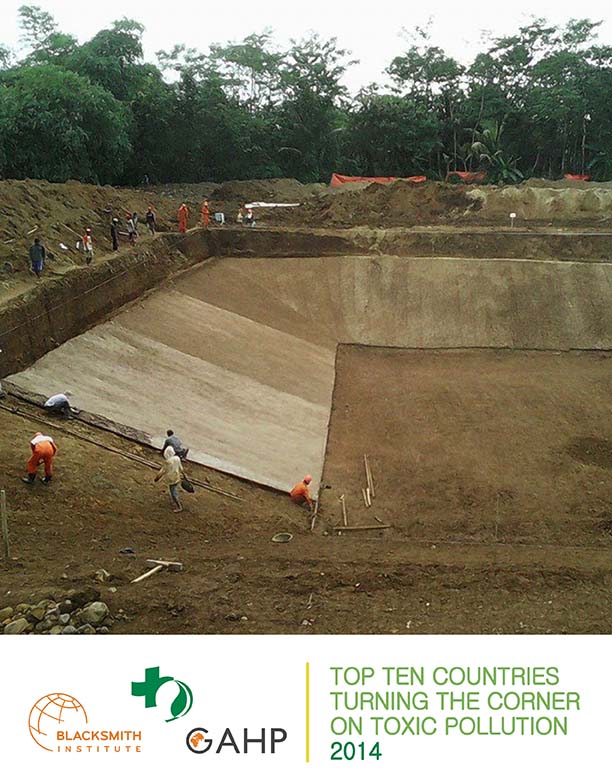
Released in January 2015, the 2014 report is the ninth in an annual series of reports published by Pure Earth and Green Cross Switzerland, and the first to involve the GAHP.
This year’s report focusing on solutions attracted global media coverage from IPS News, Quartz, Fast Company, Toronto Star, Weather.com, and many other publications. (see infographics)
Over the years, the “World’s Worst Polluted” series of reports has effectively raised global awareness about the extent and the impacts of toxic pollution in low- and middle-income countries.
Forging a Global Alliance
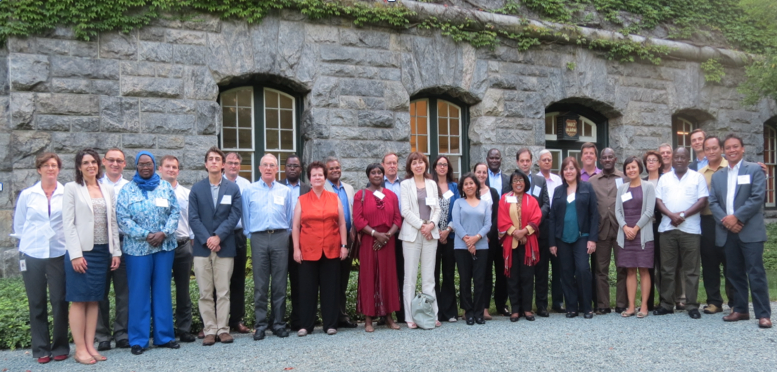
In 2014, we made connections with representatives of more than 75 agencies, including country offices/missions of bilateral and multilateral organizations, as well as country government agencies. We also hosted the second annual meeting of the GAHP at the Pocantico Center of the Rockefeller Brothers Fund in New York. Among the key outcomes was a five-year plan of action for the global alliance to take the fight against toxic pollution to the next level.




